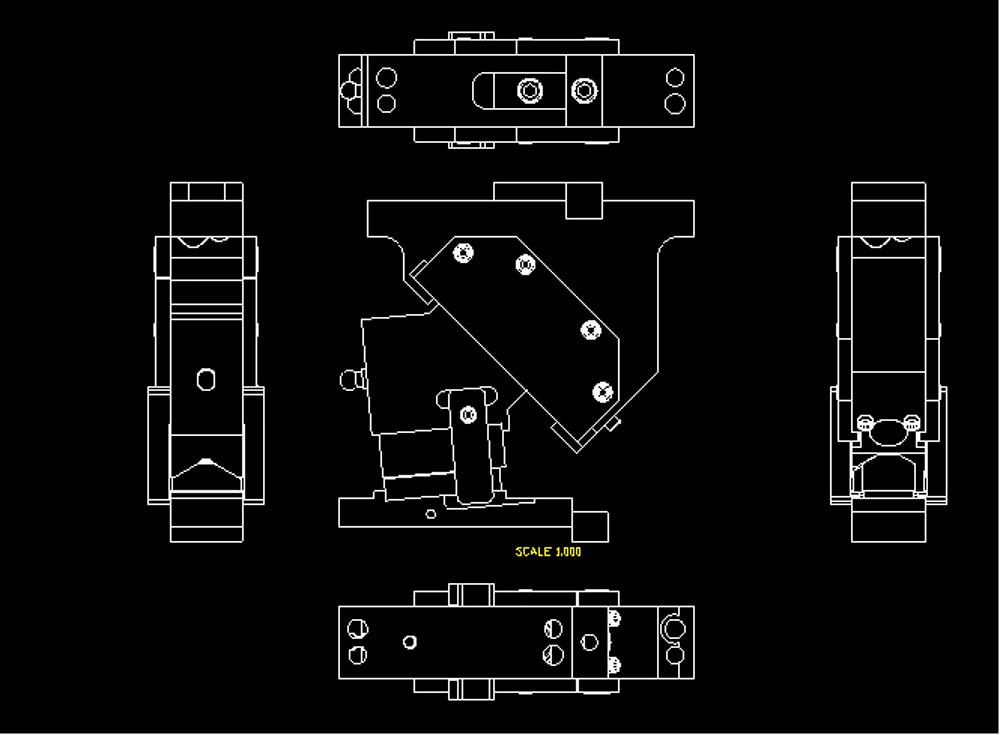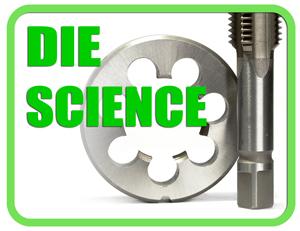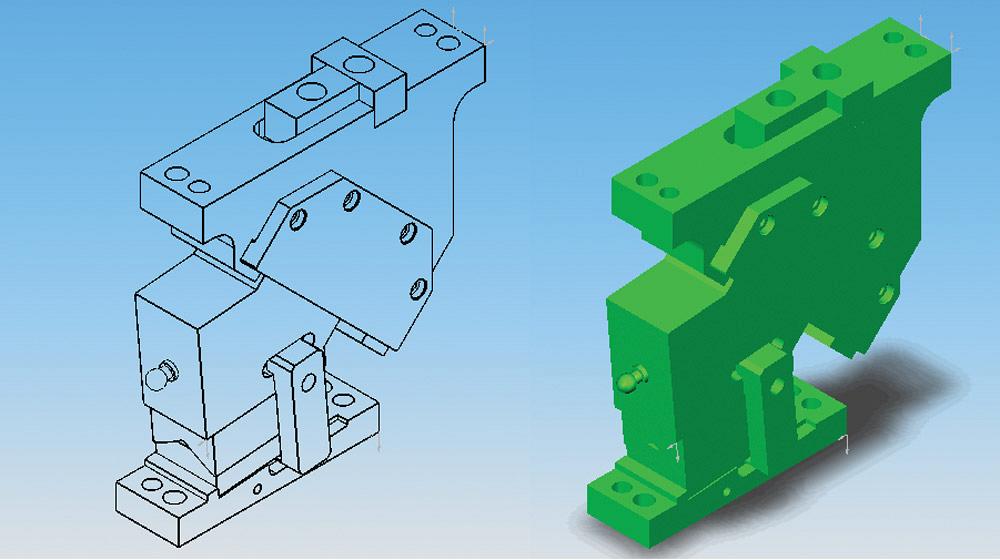Contributing Writer
- FMA
- The Fabricator
- FABTECH
- Canadian Metalworking
Categories
- Additive Manufacturing
- Aluminum Welding
- Arc Welding
- Assembly and Joining
- Automation and Robotics
- Bending and Forming
- Consumables
- Cutting and Weld Prep
- Electric Vehicles
- En Español
- Finishing
- Hydroforming
- Laser Cutting
- Laser Welding
- Machining
- Manufacturing Software
- Materials Handling
- Metals/Materials
- Oxyfuel Cutting
- Plasma Cutting
- Power Tools
- Punching and Other Holemaking
- Roll Forming
- Safety
- Sawing
- Shearing
- Shop Management
- Testing and Measuring
- Tube and Pipe Fabrication
- Tube and Pipe Production
- Waterjet Cutting
Industry Directory
Webcasts
Podcasts
FAB 40
Advertise
Subscribe
Account Login
Search
Die Science: Designing dies 2-D or 3-D?
- By Art Hedrick
- June 16, 2016
- Article
- Bending and Forming
A while ago a loyal reader of STAMPING Journal® and the Die Science column e-mailed me and asked if I would discuss the topic of die design. Specifically, he wanted me to address 2-D versus 3-D design methods.
I don't know for sure, but my guess is that he was pondering the thought of making the big move from 2-D to 3-D design and wanted to get a better understanding of the advantages of each method.
What Is Die Design?
To make a good decision regarding which design method to use, it is important to define exactly what a die designer does.
Based on my experience, most failures in a stamping plant are the result of poor processing methods, not poor die design. So let's differentiate between process engineers and die designers.
A process engineer determines the process that must be followed to transform flat sheet metal from a blank into a finished part. This process might require one single-station line die or a 100-station progressive die, but it is unquestionably the most important decision influencing the success of the stamping operation. The die designer's responsibility is to express, engineer, and convey this process so that it can be understood clearly and manufactured easily.
Of course, product failures sometimes are the result of poor die design methods. Poor tool steel selection, weak or thin die sections, and poor guidance or heeling methods are not uncommon. However, if the process engineer does a poor job, the die simply won't work.
I have had numerous consulting jobs in which my clients were unable to make a good part in the die, typically because the die was missing one to three necessary stations. An oversight like this often is the result of trying to condense the die to fit in a small press, and that can be risky business.
If the process is not correct, the die won't work, whether it's 2-D or 3-D.
I spent a great deal of time with a company that employed many talented die designers/processors who were still using a pencil and paper to convey their processes. When they processed the part, they conveyed it to a process engineer/die designer, who designed it on a computer. It didn't matter, though, because the real value of these employees was their ability to create the process, not design the die.
Anybody can put lines on paper or a computer, but it takes an individual with a great deal of talent, ingenuity, creativity, and understanding of physics to arrange those lines so they can produce a robust die and part. While die design software can improve design speed and ability, it does nothing to improve the designer's processing skills.

Figure 1
With 2-D die designs, it’s more difficult to figure out what a particular die section looks like.
Image courtesy of Danly IEM Corp.
3-D Advantages and Disadvantages
One of the greatest advantages of 3-D software is its ability to convey what the designer wants. As a diemaker, I spent countless hours thumbing through 2-D die designs (see Figure 1), flipping from section AA to section BB to the front elevation and so on, trying to figure out just what that particular die section looked like. With today's 3-D technology (see Figure 2), a diemaker can view any component in the die as a 3-D entity and rotate it, enlarge it, reduce it, cut a section through it, and measure it.
Another advantage of 3-D software is that it provides a solid model of each die component, which can aid in the machining process. When dies are designed in 2-D, a machinist often must create a 3-D model (surfacing) from the 2-D designs. From this 3-D model, the machinist can create a tool path and program the mill to cut the desired shape. Designing in 3-D eliminates the process of creating the solid model for machining purposes.
Sophisticated design software can communicate directly with milling machines to create cutter paths for all of the die components that need to be machined. In addition, certain design software can determine quickly if any interference issues need to be addressed when the die is fully closed.
Of course, with any new technology come a few disadvantages. First, 3-D design software can be very expensive. It might be worth the investment, however, if it eliminates confusion and helps reduce machining time.
Second, the learning curve usually is long when transitioning from 2-D to 3-D. The biggest problem is that very few of the design methods used in 2-D are used in 3-D technology. Most designers tell me it's like learning how to draw all over again. However, after they become accustomed to the 3-D software, most designers find it easier to use than 2-D.
2-D Advantages and Disadvantages
Even with all the developments in 3-D, 2-D technology still has a place in the world of die design, and it is a more economical choice. If you have mastered 2-D design, have few problems conveying what you want to the diemaker, and don't use high-tech machining methods, why change?
I'm not suggesting you shouldn't strive for continuous improvement or consider 3-D design methods. Take the time to compare the value that it may add with the initial investment that you will have to make. However, I have seen ideas sketched on a napkin turn into a very successful die, while other dies drawn with high-tech 3-D software fail drastically. Again, true success lies in your ability to create an effective process for manufacturing your part.
One thing to keep in mind, though, is that some companies simply will not accept a die designed with 2-D software. These companies often want the entire 3-D die component data provided for them. This allows them to reproduce all of the replacement die components without creating a 3-D model. Die design in 2-D often is harder to interpret.
The most important factor to remember when deciding to design in 2-D or 3-D is that a line is a line. In the end, it doesn't matter whether the line is 2-D or 3-D, but that the line is the correct length and in the right spot. The computer does not determine either of these—you do!
Thanks for reading Die Science and STAMPING Journal.
Until next time ... Best of luck!
About the Author

Art Hedrick
10855 Simpson Drive West Private
Greenville, MI 48838
616-894-6855
Related Companies
subscribe now

The Fabricator is North America's leading magazine for the metal forming and fabricating industry. The magazine delivers the news, technical articles, and case histories that enable fabricators to do their jobs more efficiently. The Fabricator has served the industry since 1970.
start your free subscription- Stay connected from anywhere

Easily access valuable industry resources now with full access to the digital edition of The Fabricator.

Easily access valuable industry resources now with full access to the digital edition of The Welder.

Easily access valuable industry resources now with full access to the digital edition of The Tube and Pipe Journal.
- Podcasting
- Podcast:
- The Fabricator Podcast
- Published:
- 04/16/2024
- Running Time:
- 63:29
In this episode of The Fabricator Podcast, Caleb Chamberlain, co-founder and CEO of OSH Cut, discusses his company’s...
- Trending Articles
AI, machine learning, and the future of metal fabrication

Employee ownership: The best way to ensure engagement

Steel industry reacts to Nucor’s new weekly published HRC price

Dynamic Metal blossoms with each passing year

Metal fabrication management: A guide for new supervisors

- Industry Events
16th Annual Safety Conference
- April 30 - May 1, 2024
- Elgin,
Pipe and Tube Conference
- May 21 - 22, 2024
- Omaha, NE
World-Class Roll Forming Workshop
- June 5 - 6, 2024
- Louisville, KY
Advanced Laser Application Workshop
- June 25 - 27, 2024
- Novi, MI




























